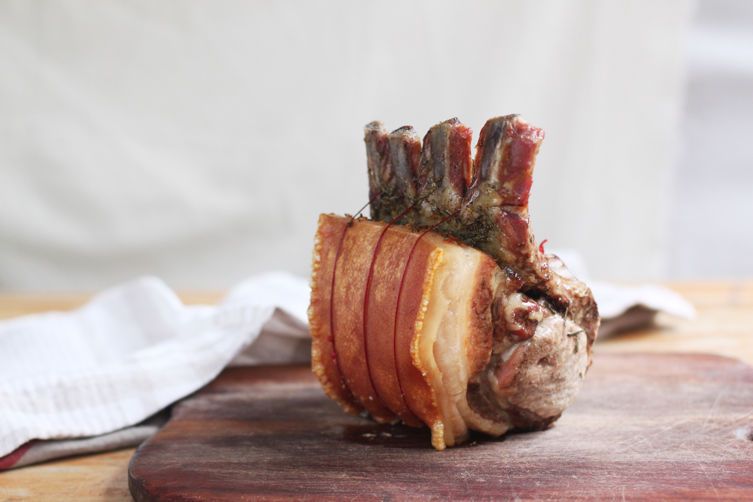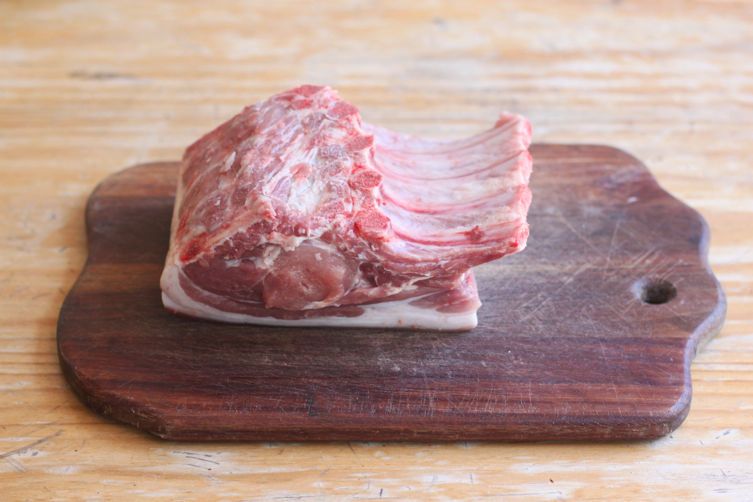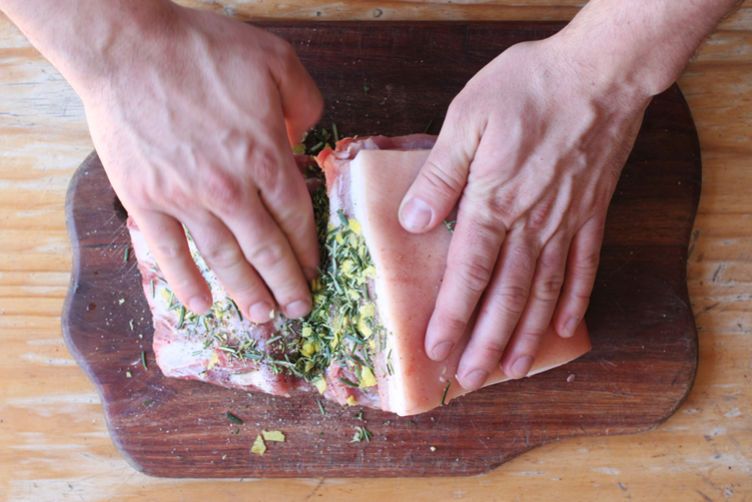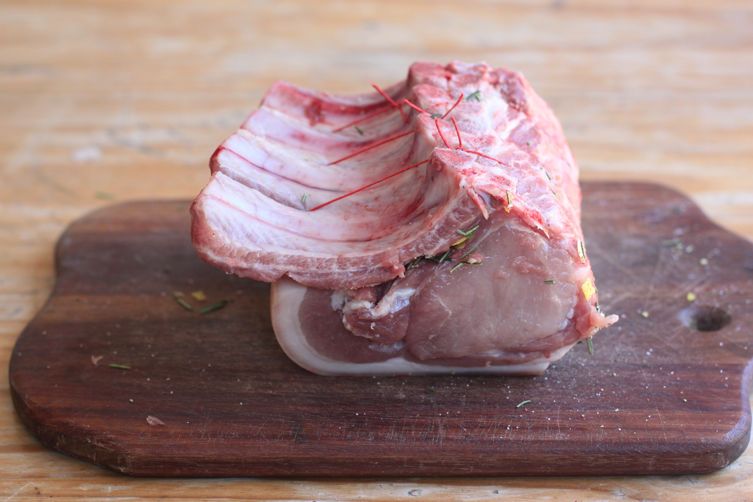Every Tuesday, Italian expat Emiko Davies is taking us on a grand tour of Italy, showing us how to make classic, fiercely regional dishes at home.
Today: Impress with this slow-cooked Tuscan pork roast at your next Sunday dinner.

This simple Tuscan pork roast has been on Florentine tables since at least the Renaissance, likely even longer. Although some records indicate that arista was mentioned even in the 1200s, its favored origin story takes the dish back to the time of Cosimo de' Medici in 1439 when, during the banquet of an important assembly of bishops and cardinals in Florence, this pork roast was served. One of the guests exclaimed “Aristos!” (Greek for “the best”) and the name stuck.
There are several different ways to cook and prepare this roast. Some cooks, instead of placing the chopped herbs along the bone, make half-inch incisions all over the meat and stuff each one with a little garlic and rosemary; others prefer not to do this for the sake of appearance when the pork is sliced. Some use a boneless cut and slice it thinly; in this version, it is sliced thickly using the bones as a guide. The roast can be cooked in a moderately high oven, but this slow-roasted version guarantees moist, juicy meat that otherwise has a tendency to dry out.

While the essential flavors of this roast are the classically Tuscan garlic, sage, and rosemary, the lemon zest -- an idea taken from Fabio Picchi, author, chef, and owner of Florence's Cibreo restaurant -- is a wonderful addition that gives the pork a zingy lift.
More: Here are 10 more roasts to warm you up this winter.
Pellegrino Artusi, in his recipe for it from his 1891 cookbook, Science in the Kitchen and The Art of Eating Well, adds cloves in addition to rosemary, stuck into the little incisions made all over the surface. He also prefers it cold, the next day, claiming it's even better than when served hot. It's still found this way in some traditional Florentine trattorie.


If you're not roasting peeled and chopped potatoes in the juices of this roast that collect on the bottom of the pan, you are missing out on one of the best-kept secrets of Tuscan cuisine. Some blanched greens (Tuscan kale, chard, or any other sturdy green leaf) or cooked cannellini beans tossed through those juices make wonderful sides to this dish too.
More: Don't throw out your kale stems -- here's what to do with them.
Simple enough for a family meal, but elegant enough to impress guests, this versatile pork roast should be the star of your next Sunday dinner.

Tuscan Pork Roast (Arista di Maiale)
Serves 4 to 6
3 pound (1.3 kilograms) bone-in pork loin/rib roast
About 3 tablespoons extra-virgin olive oil
Salt and pepper
1 tablespoon finely chopped fresh rosemary
2 cloves garlic, finely chopped
Zest of 1 small lemon, finely grated
5 sage leaves, finely chopped
1 cup (250 milliliters) water or white wine
See the full recipe (and save and print it) here.
Photos by Emiko Davies
See what other Food52 readers are saying.